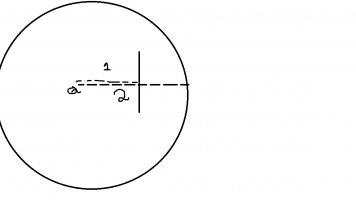Qwertyuiop[]
Junior Member
- Joined
- Jun 1, 2022
- Messages
- 123
Hi, I have this question. We are given a point Q and a plane. The distance between the plane and point Q is 1. A sphere is centered at point Q with radius 2. What is produced when sphere and plane intersect. I got "the empty set" because i drew a diagram exactly like in the question. We know the size of the sphere but don't know how big is the plane. I will attach a quick sketch of my diagram. So the empty set because they don't intersect. We get different answers if the size of the plane is not specified. If the plane was bigger then the intersection would be a circle. I did a google search on the question and they say we can either get a point or a circle when a sphere and a plane intersect so other options like a) an ellipse and c) parabola are not possible ?


